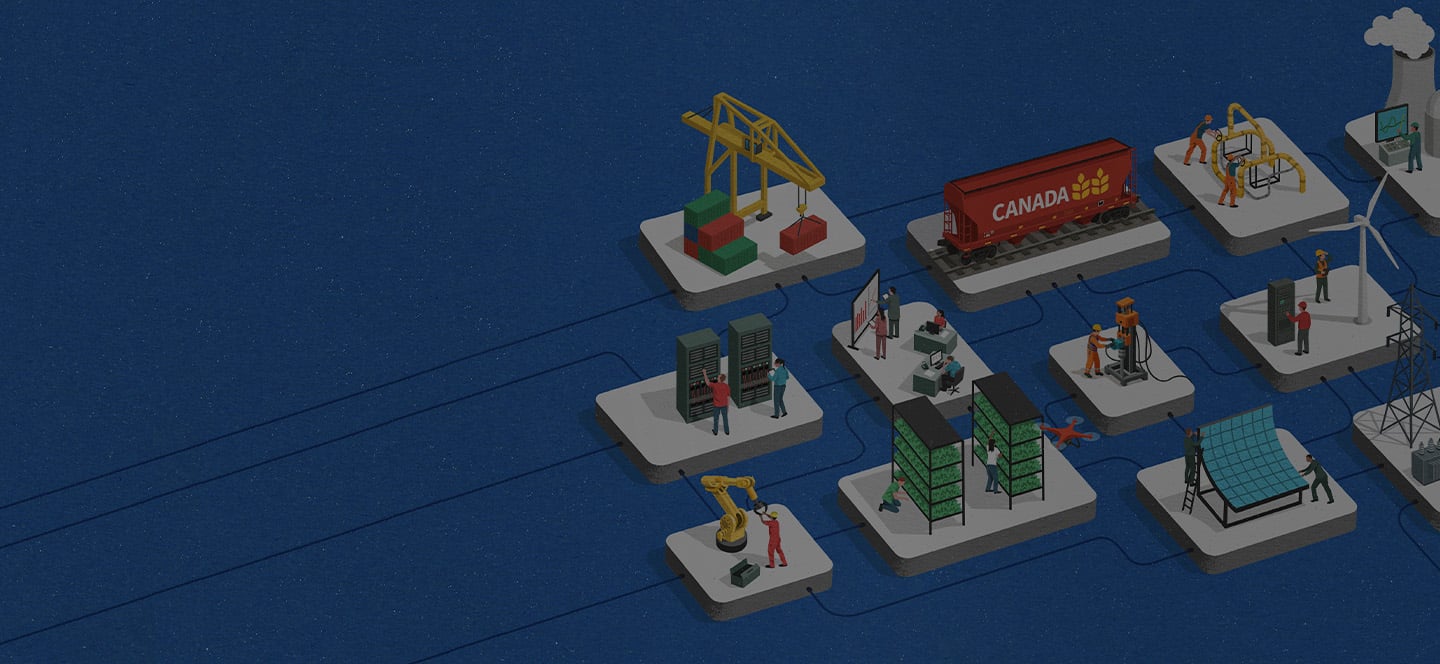On February 23, 2009, the Hon. George Smitherman, Ontario's Deputy Premier and Minister of Energy and Infrastructure, introduced Bill 150, the Green Energy and Green Economy Act, 2009 (GEA). The GEA is a sweeping piece of legislation which will involve the amendment of at least 15 existing provincial statutes. The GEA provides the general goals and directives of the province while leaving the detailed regulations to another day. Bill 150 is intended to put Ontario at the forefront of renewable power development, tying support for renewable power to domestic content requirements with the expectation of creating a broader Ontario green economy.
The following key initiatives, if fully implemented, will have a significant impact on renewable power development in Ontario.
A New Feed-In Tariff Program
Under proposed amendments to the Electricity Act, 1998, the Minister is authorized to direct the Ontario Power Authority (OPA) to develop a feed-in tariff program that is designed to procure energy from renewable energy sources.
Bill 150 defines a feed-in tariff program as “a program for procurement, including a procurement process, providing standard program rules, standard contracts and standard pricing regarding classes of generation facilities differentiated by energy source or fuel type, generator capacity and the manner by which the generation facility is used, deployed, installed or located.”
The premise behind a feed-in tariff system is to reduce the uncertainty a renewable power generator faces in Ontario. Using examples such as Germany's Renewable Energy Sources Act, the Ontario government is hoping that transparent pricing for renewable power will improve a renewable power developer's ability to access financing and commercialize projects. Of course, the salient details will be found in the actual pricing regulations which have yet to be announced. There has been no indication to date of the factors that the government will take into account in attempting to incent renewable energy projects of all types. While the final tariff for each type of renewable energy will be critical, a related issue is the allocation among ratepayers of the obligation to pay the additional costs of renewable energy. It is interesting to note that the Minister has reserved the power to direct the OPA to establish the tariff s in a manner intended to achieve the goals of participation in renewable energy projects by aboriginal peoples and local communities and in relation to domestic content. The latter of course also raises issues of NAFTA compliance.
The “Right-to-Connect” for Renewable Power
Under amendments proposed to the Electricity Act, 1998, a transmitter or distributor in Ontario is required to connect a renewable energy generation facility to its transmission or distribution system in accordance with regulations yet to be determined. Such regulations will likely stipulate minimum specifications a renewable generation facility must meet in order to avail itself of the “right to connect”. Distributors, transmitters, the OPA and the Independent Electricity System Operator are also required to provide information regarding the ability to connect renewable power to the transmission or distribution systems. Such information is to be current and prospective and is to be made available to the public. It is uncertain (a) whether the “right-to-connect” will supersede or be subject to existing transmission constraints, (b) how the costs of connection will factor in to this “right”, and (c) what exactly is meant by “priority connection access” to the transmission and distribution systems.
Investing in the Smart Grid
The Ontario government defines the smart grid as “advanced information exchange systems and equipment that when utilized together improve the flexibility, security, reliability, efficiency and safety of the integrated power system, particularly for the purposes of enabling the increased use of renewable energy sources and technology, including generation facilities connected to the distribution system.”
Creation of the Renewable Energy Facilitation Office
The GEA contemplates the creation of the Renewable Energy Facilitation Office and a Renewable Energy Facilitator to generally facilitate the development of renewable power projects in Ontario. The office is to assist in the removal of barriers to and promote opportunities for renewable power in Ontario. The extent of the Renewable Energy Facilitator's powers is unclear without the applicable regulations. We also note that under the GEA the Lieutenant Governor may also, by regulation, “designate” renewable power projects or sources in order to assist in the removal of barriers to and to promote opportunities for the use of renewable energy sources and to promote access to transmission and distribution systems.
Distributors Permitted to Pursue Generation
Bill 150 will permit distributors to directly own and operate:
- A renewable energy generation facility that does not exceed 10 MW or such other capacity as may be prescribed by regulation and meets the criteria prescribed by regulation;
- A combined heat and power generation facility that meets the criteria prescribed by regulation; or
- An energy storage facility that meets the criteria prescribed by regulation.
Energy Conservation
Key conservation measures include:
- Authorizing the Minister to issue directives containing CDM targets to be met by distributors and licensees. The nature of such targets and the consequences of not meeting them are important details that will be addressed in the regulations.
- Amendments to the Building Code for the establishment of energy conservation standards that are to be reviewed every five years. This reflects recognition that energy conservation oriented codes and standards will deliver superior conservation benefits.
- Regulations requiring persons who are offering to sell or lease an interest in real property to provide energy consumption/ efficiency information with respect to such property.
- Repeal of the section of the Electricity Act establishing the Conservation Bureau within the OPA and the assumption of energy conservation reporting functions by the Commissioner under the Environmental Bill of Rights Act.
- Potentially significant public agency obligations to report on energy consumption, conservation and greenhouse gasses in relation to public facilities.
Amendments to the Planning Act (Ontario)
Bill 150 amends the Planning Act (Ontario) and corresponding provisions in the City of Toronto Act (Ontario) in a number of ways:
- The subdivision control provisions of the Planning Act have been relaxed such that a land owner will be permitted to lease less than all its property without obtaining a severance consent so long as the lease is for a renewable energy generation facility or renewable energy project and provided that the lease is for a period of less than 40 years (rather than the standard 21-year period otherwise applicable).
- Municipalities may not prevent the demolition of residential property by way of a Demolition Control by-law where the demolition is required in connection with a renewable energy generation facility or a renewable energy project.
- Renewable energy generation facilities and renewable energy projects are exempt from zoning by-laws and other by-laws designed to prohibit development on certain types of lands such as marshy lands, contaminated lands and wildlife habitats or to regulate the height, bulk, location, size, floor area, spacing, character and use of buildings or structures all of which by-laws are passed under Part V of the Planning Act.
- Renewable energy generation facilities and renewable energy projects are exempt from the development permit system adopted by a municipality to control development of lands within its boundaries.
The amendments to the Planning Act (Ontario), particularly with respect to exemptions from Demolition Control and zoning by-laws, are intended to prevent municipal level powers provided under the Planning Act from derailing renewable energy projects and reflect the Minister's intention to “upload” these responsibilities.
Development of an Ontario GHG Emissions Reductions Cap-and-Trade Carbon Market
Under current OPA contracts the OPA takes title to all environmental attributes that are connected to the underlying power generation. This has meant historically that the OPA has become the title holder to all related greenhouse gas (GHG) emission reductions associated with reduced to low GHG emitting power sources. Ontario, as part of the Western Climate Initiative, is currently in the process of determining how it will implement a fixed cap-and-trade program. Although the GEA is silent on the point, it is hoped that the OPA contract for renewable energy projects will reverse the current position and permit the renewable developer the ability to retain title to and to monetize all environmental attributes including carbon credits.
Environmental Matters
Bill 150 includes several interesting provisions related to environmental protection and assessment, some of which may be controversial. As with other matters raised in Bill 150, it will be critical to see the regulations that will include important details that are introduced by the general statute.
Environmental Assessment
There are no express changes to the Environmental Assessment Act or Regulation116/01 (assessments for electricity projects). However, The Lieutenant Governor will be able to make regulations that specify renewable energy projects or renewable energy sources to “assist in the removal of barriers to and to promote opportunities for the use of renewable energy sources, as well as to promote access to transmission systems and distribution systems for renewable energy projects.” This will override restrictions imposed by municipal by-laws or condominium by-laws, but will be subject to restrictions imposed by statutes or regulations (presumably, for example, Regulation 116/01, unless expressly exempted by a new regulation). The Lieutenant Governor can also issue directives that establish energy and environmental standards that must be met for new construction or major renovations for government facilities. The Lieutenant Governor will also be able to make regulations for renewable energy generation facilities related to their location (including prohibiting certain areas), capacity and connection to the grid.
Environmental Commissioner's Reports
Starting in 2010 for 2009, Ontario's Environmental Commissioner must report to the Legislature about Ontario's reductions and efficiencies in the use of electricity, natural gas, propane, oil and transportation fuels, as well as Ontario's progress in reducing greenhouse gas emissions (carbon dioxide, methane, nitrous oxide, hydrofluorocarbons, perfluorocarbons and sulphur hexafluoride).
Renewable EnergyApproval
A proponent of a renewable energy project will obtain a Renewable Energy Approval (REA) (which will contain conditions), which the Ministry of Environment's approval director may issue if it is in the public interest to do so. A REA is the equivalent of an omnibus environmental operating permit, and the otherwise required approvals for emissions to the atmosphere, waste management system/waste disposal site, water taking (transfers from designated water basins will not be permitted), well construction and sewage works will not be required. The Minister of the Environment will issue policies related to REAs and approvals must be consistent with such policies.
First Nations
One of the primary goals of Bill 150 is to improve access to the transmission and distribution systems for renewable power generations. To the extent that renewable generation projects or system upgrades will require intrusion on lands under aboriginal or treaty claim (traditional lands) or additional facilities on such lands like additional transmission lines, consultation by the government with the applicable First Nation will be required. Pursuant to the GEA, the Minister may require the OPA to establish measures to facilitate the participation of aboriginal peoples in the development of renewable energy facilities, transmission systems and distribution systems and such measures may include programs or funding of such participation. The extent to which such funding will support participation efforts or fund project participation is unclear.
Next Steps
The GEA is expected to move quickly through the legislative process. It is anticipated that the GEA will be passed sometime this Spring to be followed by regulations containing the vitally important implementation details including those noted above.
















